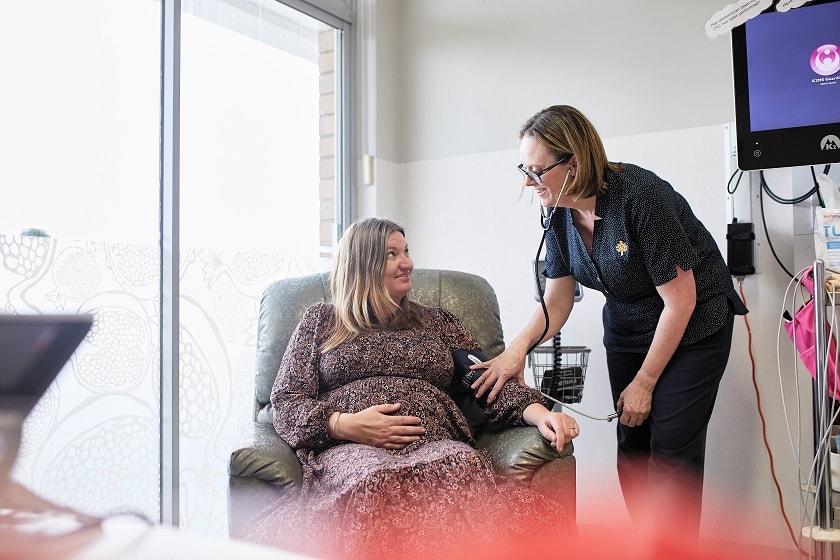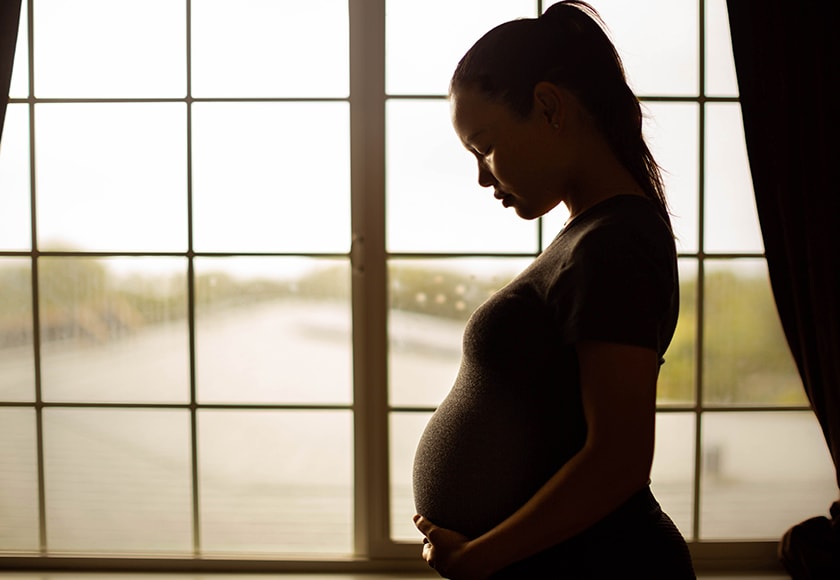The pelvic floor muscles help support your back and the weight of your growing baby while assisting you in maintaining good bladder and bowel control.
During pregnancy, these muscles can lose tone and become lax.
Ways you can protect your pelvic floor during your daily activities:
- Stabilise your pelvis. Tighten your tummy, pelvic floor and buttock muscles when changing position.
- Stand tall when walking so the deep layer of corset-like muscles in your tummy tighten.
- Ensure equal weight on both feet. If standing for long periods, gently sway from side to side.
- Sit when dressing.
- Do not cross your legs. Sit symmetrically on the chair.
- Avoid lifting and carrying heavy objects.
- Shorten your strides.
- Take the stairs one step at a time or avoid stairs if there is an alternative.
Sleeping
Put a pillow between your knees. Have your top knee as high as your hip when lying on your side. Keep the pillow(s) between your knees when you turn. A boomerang or long body pillow can also support your tummy.
The car and driving
When getting in, lower yourself onto the seat backwards. Turn to the front of the car and bring your legs in with your knees and ankles together.
Household chores
Avoid chores such as, vacuuming, mopping or sweeping. If unavoidable, stabilise the pelvis, keep your body upright and minimise twisting at your hips.
When performing tasks that require you to stoop, such as making the bed, try squatting or kneeling.








